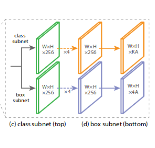Several variants of reweighted risk functionals, such as focal loss, inverse focal loss, and the Area Under the Risk--Coverage Curve (AURC), have been proposed for improving model calibration, yet their theoretical connections to calibration errors remain unclear. In this paper, we revisit a broad class of weighted risk functions commonly used in deep learning and establish a principled connection between calibration error and selective classification. We show that minimizing calibration error is closely linked to the selective classification paradigm and demonstrate that optimizing selective risk in low-confidence region naturally leads to improved calibration. This loss shares a similar reweighting strategy with dual focal loss but offers greater flexibility through the choice of confidence score functions (CSFs). Our approach uses a bin-based cumulative distribution function (CDF) approximation, enabling efficient gradient-based optimization without requiring expensive sorting and achieving $O(nK)$ complexity. Empirical evaluations demonstrate that our method achieves competitive calibration performance across a range of datasets and model architectures.
翻译:暂无翻译




